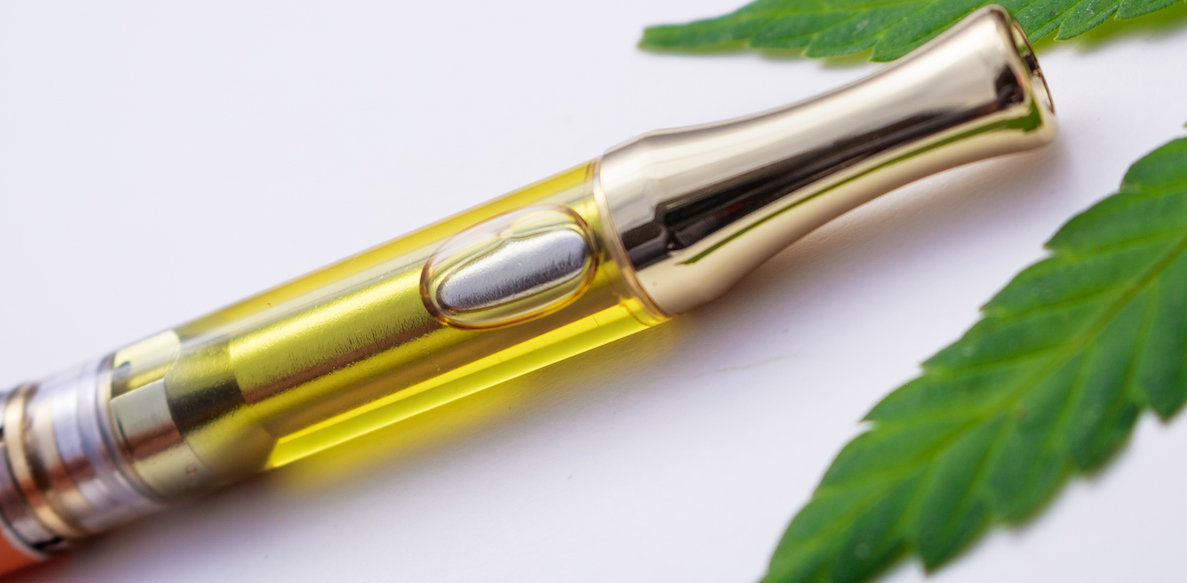<< Back
Teens Vaping Marijuana Shows Dramatic Increase in New Survey

October 27, 2021
One in eight North American teenagers has vaped marijuana in the last year, and one in 10 in the last month, according to studies indicating that the trend has doubled the number of teen users in seven years.
The most recent research is from the National Center for Youth Substance Use Research in Australia, and study authors said they noted an “upward trajectory” of teen marijuana vaping in the United States and Canada.
The percentage of teens who tried vaping marijuana increased from 6 percent in 2013-16 to nearly 14 percent in 2019-2020. Teens who had vaped pot in the previous year climbed from 7 percent to 13 percent.
Dr. J. Craig Allen, vice president of addictions for Hartford HealthCare and medical director of Rushford, part of the system’s Behavioral Health Network, had been monitoring this trend through another survey.
“Monitoring the Future is a yearly survey of students in eighth, 10th and 12th grades, looking at their attitudes toward and use of addictive substances. The increase in vaping of marijuana was the second-largest one-year jump ever traced for any substance in the 45-year history of the survey,” Dr. Allen noted, adding that the largest jump was teen nicotine vaping in 2017-18.
He surmised that the increase stems from the belief among teens that marijuana is not harmful.
“Data around perception of harm shows that use of cigarettes by teens decreased as they were increasingly aware of the harm they caused,” he said. “Adolescents perceive lower risks when states approve medical marijuana programs and legalize recreational marijuana, and are more likely to use.”
In Connecticut, it became legal July 21 for residents to possess and use marijuana, but Dr. Allen said it is still illegal for anyone under 21. A workgroup associated with the new state law prioritized public education measures targeting youth because experts recognize the risks cannabis poses to them.
“Having a legal age of 21 helps keep cannabis out of the high schools,” Dr. Allen said. “However, like with alcohol, teenagers will still find a way to access it.”
While vaping of cannabis has jumped in teens, the increase of cannabis use in general has grown more slowly, according to the Australian study. The experts believe the teens are switching from smoking joints to vaping.
Teen use of cannabis – whether through vaping, smoking or edibles – comes with the risks of misuse, addiction and neuropsychiatric concerns, he continued. Edibles, especially for inexperienced users, can cause cannabis toxicity as it is easy to consumer higher doses than recommended.
“High-potency THC products can lead to emergency visits for teens while children consuming edible brownies or candies can lead to hospitalizations with a few cases requiring intensive care treatment,” Dr. Allen said. “Vaping, also perceived as harmless, has been associated with EVALI, or e-cigarette or vaping product use-associated lung injury.”
According to the Centers for Disease Control and Prevention, 15 percent of EVALI patients are under 18 with the main cause of the illness related to vapes containing THC, particularly ones with vitamin E acetate.
Parents should understand that cannabis is an addictive substance that carries the risk of life-long reliance when use begins young, he said.
“Parents can help their children learn about the risks and help to mitigate potential harms. If you are concerned your child has or is in the process of developing a cannabis use disorder, get them help,” Dr. Allen said. “This can be done through their pediatrician, by calling Rushford or dialing 211.”
If you need help with substance use disorders, click here.